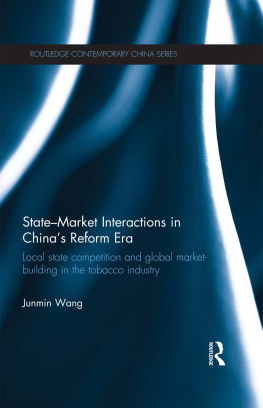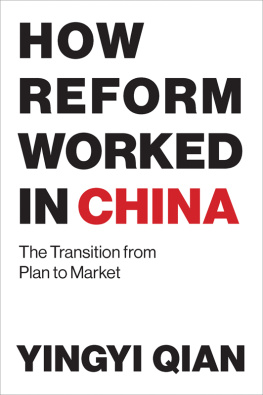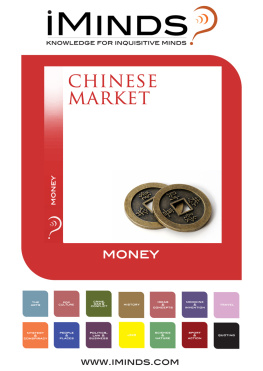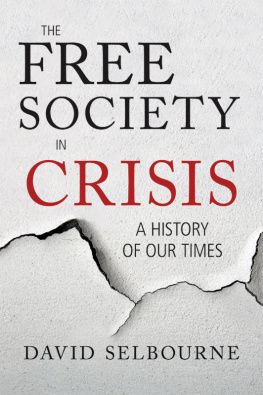The STRANGER and the CHINESE MORAL IMAGINATION
Haiyan Lee
STANFORD UNIVERSITY PRESS
Stanford, California
Stanford University Press
Stanford, California
2014 by the Board of Trustees of the Leland Stanford Junior University. All rights reserved.
No part of this book may be reproduced or transmitted in any form or by any means, electronic or mechanical, including photocopying and recording, or in any information storage or retrieval system without the prior written permission of Stanford University Press.
Library of Congress Cataloging-in-Publication Data
Lee, Haiyan, author.
The stranger and the Chinese moral imagination / Haiyan Lee
pages cm.
Includes bibliographical references and index.
ISBN 978-0-8047-8591-4 (cloth : alk. paper)
1. Chinese literature20th centuryHistory and criticism. 2. Chinese literature21st centuryHistory and criticism. 3. Strangers in literature. 4. Literature and societyChina. 5. Arts and societyChina. 6. ChinaMoral conditions. I. Title.
PL2303.L377 2014
895.109'005dc23
2014025469
ISBN 978-0-8047-9354-4 (electronic)
Printed in the United States of America on acid-free, archival-quality paper. Typeset at Stanford University Press in 10/14 Minion.
Acknowledgments
Some of the impetus for writing this book dates back to the summer of 2005, when my husband and I led a group of eighteen undergraduate students from the University of Colorado on a study tour of mainland China, Hong Kong, and Taiwan. During our week and a half in Beijing, we were often pressed by the students to explain some of their peculiar encounters, such as being borrowed by Chinese tourists to pose with them for snapshots, or getting cavalierly sheared by merchants and peddlers. It struck me that street-level interactions with foreigners were still a very fraught, touch-and-go affair, for all of Chinas sovereign independence and reform-era openness to the outside world. The experience, while stimulating and rewarding on balance, got me thinking about the travails of other kinds of strangers who have, under different circumstances, also found themselves at the receiving end of a society that privileges kinship and guanxi. To my delight, I began to come across literary and visual cultural materials that took up this problem in earnest, engaging, occasionally disturbing, but always artful ways. I have grappled with these materials for nearly a decade, and the journey has resembled more a recursive series of forays and peregrinations than a straight path, but all the while challenging and enriching.
Many friends and colleagues have indulged me in the somewhat unusual pursuit of a literary project pivoted on a quaint sociological concept. Their skepticisms have kept me honest, and their constructive engagement has done much to help me hammer the project into shape: Russell Berman, Prasenjit Duara, Michael Dutton, Paul Festa, Leela Gandhi, Henrietta Harrison, Bonnie Honig, Theodore Huters, Andrew Jones, Keith McMahon, Viren Murthy, Ban Wang, Jeffrey Wasserstrom, Robert Weller, and especially David Wang and two other readers for the Stanford University Press. I also owe a special debt of gratitude to the warm and sustaining mentorship of Prasenjit Duara, Ban Wang, and David Wang.
This project has benefited from the financial and organizational support of a number of institutions, including the University of Colorado at Boulder, University of Hong Kong, Harvard University (Fairbank Center), and Stanford University, in the form of grants, fellowships, and research leaves. In addition, the Department of East Asian Languages and Cultures at Stanford provided a generous publication subvention. Brill, Telos Press, and Duke University Press kindly granted permissions to reprint revised versions of the following publications: Figuring History and Horror in a Provincial Museum: The Water Dungeon, the Rent Collection Courtyard, and the Socialist Undead (in The Challenge of Linear Time: Nationhood and the Politics of History in East Asia, ed. Viren Murthy and Axel Schneider, Leiden: Brill, 2014, 21554); From the Iron Rice Bowl to the Beggars Bowl: What Good Is (Chinese) Literature? (Telos, no. 151, Summer 2010, 12950); Nannies for Foreigners: The Enchantment of Chinese Womanhood in the Age of Millennial Capitalism (Public Culture, vol. 18, no. 3, Fall 2006, 50729).
More than twenty years ago, I arrived in the United States a clueless new immigrant and my Italian-American family took me into its bosom with unconditional love and unstinting care. Thank you, the Festas, for I was hungry and you gave me food, I was thirsty and you gave me drink, I was a stranger and you welcomed me. To you all I dedicate this book.
Haiyan Lee
Mountain View, CA
June 2014
List of Illustrations
List of Major Primary Sources
Fiction and play:
Ding Ling. When I Was in Xia Village (ch. 3)
Gao Xingjian. Soul Mountain (ch. 1)
Gu Hua. A Small Town Called Hibiscus (ch. 3, ch. 5)
Han Bangqing. Flowers of Shanghai (ch. 3)
He Jingzhi, et al. The White-Haired Girl (ch. 1, ch. 5)
Hu Fayun. Such Is This World@Sars.Come (ch. 2)
Huang Chunming. Here Comes the Ghost Eater (ch. 1)
Jia Pingwa. Remembering Wolves (ch. 2)
Jiang Rong. Wolf Totem (ch. 2)
Lu Xun. New Years Sacrifice (ch. 1), Hometown (ch. 1)
Mo Yan. Life and Death Are Wearing Me Out (ch. 2)
Wang Gang. English (ch. 4)
Wu Chengen. Journey to the West (ch. 2)
Xia Yan. Sai Jinhua (ch. 3)
Zeng Pu. A Flower in the Sea of Sin (ch. 3)
Zhang Ailing. The Serial Mistress (ch. 3)
Zhang Hong. Sequel to A Flower in the Sea of Sin (ch. 3)
Zhu Xining. The Wolf (ch. 3)
Film and television drama:
28 Maids at Professor Tians (ch. 4)
28 Tenants at Professor Tians (ch. 4)
Blind Shaft (Introduction)
Cala, My Dog! (ch. 2)
Devils on the Doorstep (ch. 6)
Lei Feng (Introduction)
Nannies for Foreigners (ch. 6)
Since Bidding Lei Feng Farewell (Introduction)
Others:
The Nefarious Landlord Manor House (ch. 5)
Rent Collection Courtyard: Sculptures of Oppression and Revolt (ch. 5)
Songs That Reached the Heavens: The Legendary Rent Collection Courtyard Clay Sculptures (ch. 5)
State of War (ch. 5)
The True Liu Wencai (ch. 5)
Introduction: Talking to Strangers
Few observers would hesitate to characterize Chinese society as a shuren shehui, or a society of kith and kin held together by familial bonds, social ties, and patronage networks. Yet the economic reforms of the past decades have dramatically scrambled the webs of familiarity and thrown more and more strangers into proximity in big urban centers and small townships alike. How to relate to a person with whom you share no past and cannot foresee or desire a common future? Traditional Confucian ethics, with its preoccupation with the hierarchical institutions of family and state, provide little guidance in this gray zone of sociability. Socialist ethics, on the other hand, go to the extreme of abolishing the very possibility of strangerhood by substituting comradeship, a political solidarity that ostensibly binds all citizens into a self-same peoplehood. Those who dont belong to the people are not mere strangers, but enemies.
With the dismantling of the socialist planned economy and the waning of Marxist ideology, the problem of how to associate with strangers has become ever more urgent. Intermittent outbreaks of moral scandals have sent the media and the wired public into paroxysms of self-flagellation. The latest such eruption was triggered by a roadside security camera video, which captured two consecutive hit-and-run incidents in a narrow market street that left a toddler girl named Yueyue lying in a pool of blood, crushed, inert, and ignored by over a dozen passers-by. At last a ragpicker came along and brought her to the hospital where she shortly thereafter died. For all the terrible memories about the Mao era eagerly put behind, Lei Feng has never been more fondly remembered and the Lei Feng Spirit (
Next page








